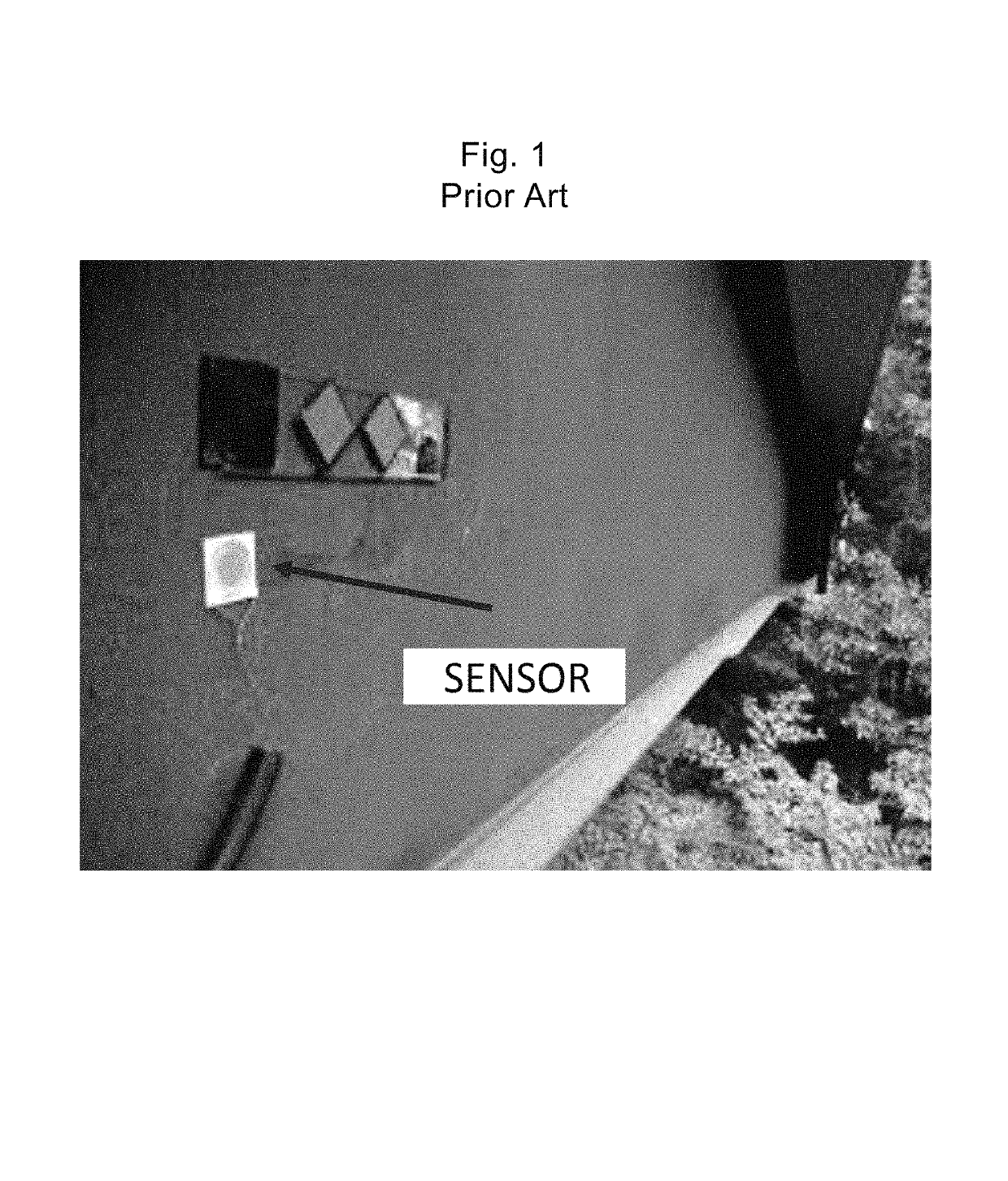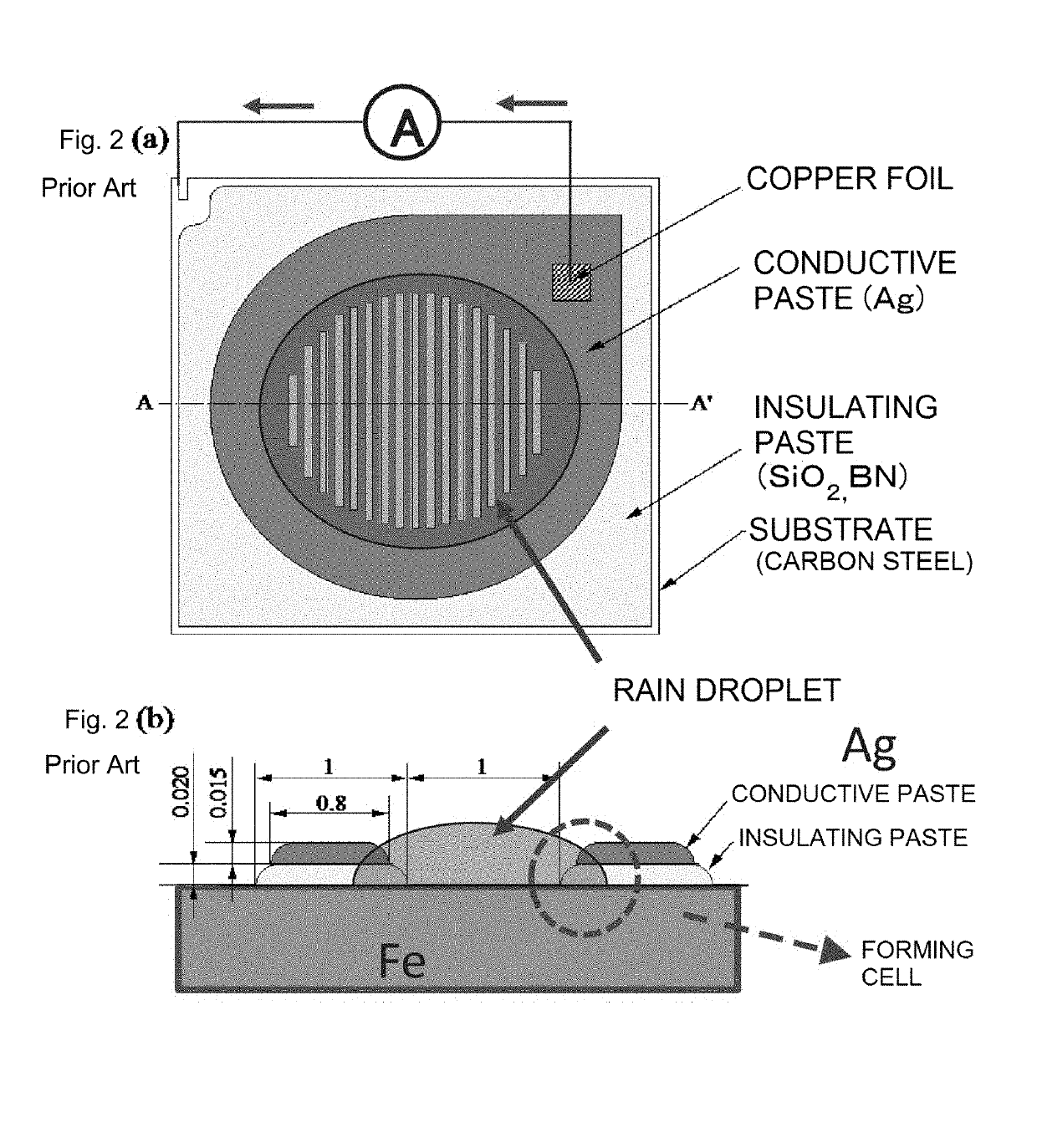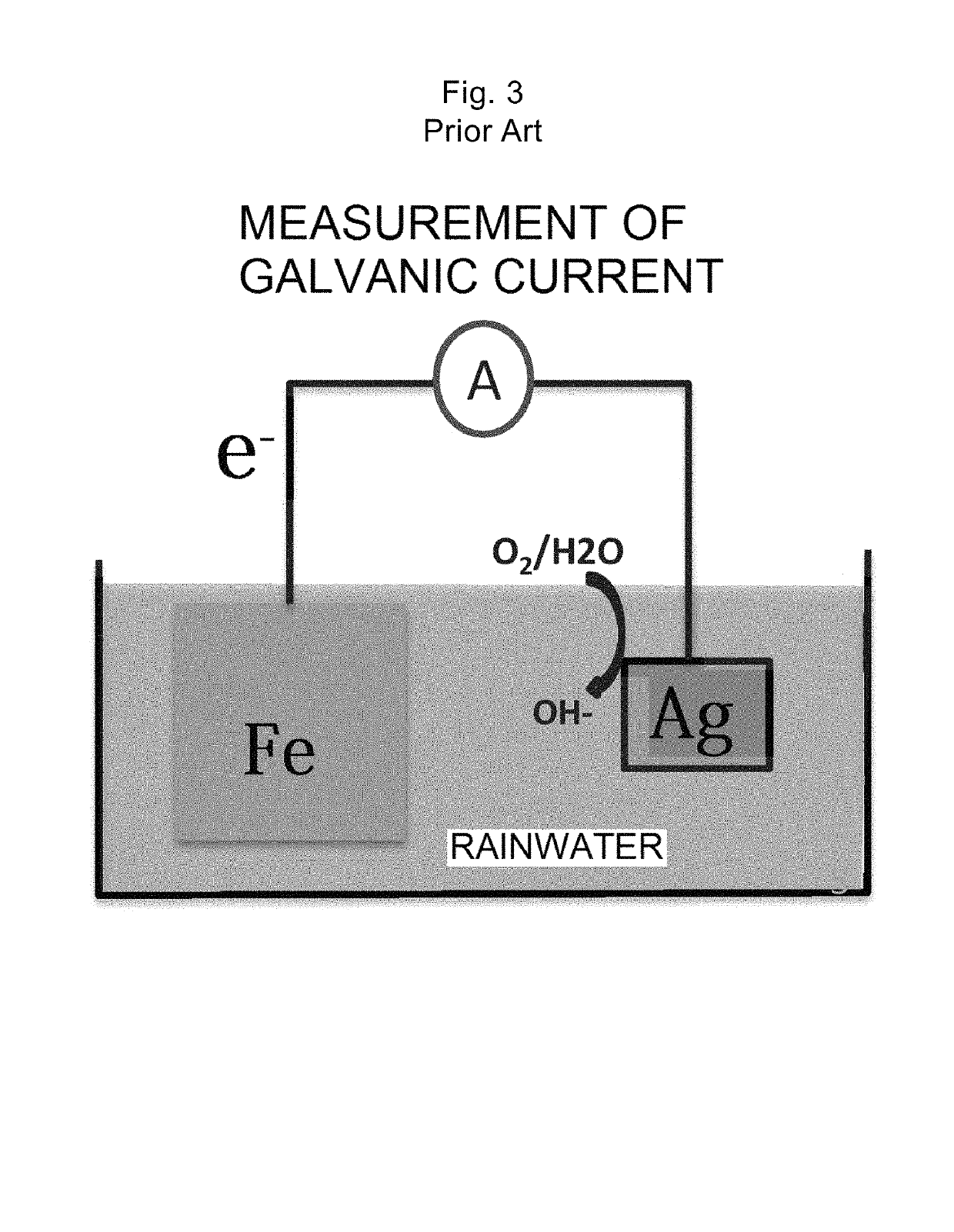Dryness/wetness responsive sensor having first and second wires spaced 5 nm to less than 20 μm apart
a sensor and dryness technology, applied in the field of high-speed response/high-sensitivity dryness/wetness responsive sensor, can solve the problems of large aging variation, inability to use humidity sensors of the electric resistance type in low humidity environments of 10% rh or less and in high humidity environments of over 90% rh, etc., to achieve simple structure, reduce size and price, and high sensitivity
- Summary
- Abstract
- Description
- Claims
- Application Information
AI Technical Summary
Benefits of technology
Problems solved by technology
Method used
Image
Examples
examples
[0060]Hereinafter, an embodiment will be described in which a dryness / wetness responsive sensor of which the sensitivity per unit area of the sensor area is improved by employing a simple structure by arranging two electrodes in a comb shape. It is understood that the present invention is not limited to such a specific form, and it should be noted that the technical scope of the present invention is defined by claims.
[0061]FIG. 6 illustrates the embodiment of a structure of the major portion, in other words, an electrode arrangement structure of the dryness / wetness responsive sensor in which an anode electrode of a metal such as iron and a cathode electrode of a metal different from the above-described metal such as silver are arranged in a comb shape on an insulating substrate. As the insulating substrate, for example, a silicon wafer having a silicon oxide film can be used. As examples of a material that can be used for the cathode electrode include gold, platinum, silver, titaniu...
PUM
| Property | Measurement | Unit |
|---|---|---|
| RH | aaaaa | aaaaa |
| RH | aaaaa | aaaaa |
| RH | aaaaa | aaaaa |
Abstract
Description
Claims
Application Information
 Login to View More
Login to View More - R&D
- Intellectual Property
- Life Sciences
- Materials
- Tech Scout
- Unparalleled Data Quality
- Higher Quality Content
- 60% Fewer Hallucinations
Browse by: Latest US Patents, China's latest patents, Technical Efficacy Thesaurus, Application Domain, Technology Topic, Popular Technical Reports.
© 2025 PatSnap. All rights reserved.Legal|Privacy policy|Modern Slavery Act Transparency Statement|Sitemap|About US| Contact US: help@patsnap.com



